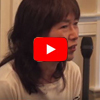Advent Hope: Staying Afloat
Blog / Produced by The High Calling
In the past several months, many of my closest friends have found themselves in the darkest of circumstances, hopeless situations not only missing easy answers but void of answers altogether. I’ve listened to laments of marriage hurts that just won’t heal, unexplained seizures that keep shaking limbs and unsettling lives, rebellion that refuses to soften, diseases that resist all curing. Others face injustice, infertility, insanity. Impossible.
“All my friends are facing the worst possible scenarios,” I tell my husband. Exaggeration? Maybe. Hope? It’s painful.
How do I hope—how do they hope—when it seems all hope is lost.
Paradigm of Despair
In his December 2014 Atlantic Monthly article “Why God Will Not Die,” author Jack Miles remembers his early encounter with the writings of philosopher Bertrand Russell, whose response to the intense suffering of the human condition led to only one conclusion. “Only on the firm foundation of unyielding despair … can the soul’s habitation henceforth be safely built,” Russell wrote in his essay “A Free Man’s Worship.”
Miles’ youthful response was relief. “Here was the habitation that my soul had been seeking!” he wrote. “Throw that master switch and feel the relief spread through your mind and body, feel the burden of hope lift from your shoulders, feel the freedom of no longer needing to make anything happen for anybody, including yourself” (emphasis mine).
I understand, sometimes, this “burden of hope,” the pain of trying to shine a small light in enormously dark places. As the suffering mounts around me, my own hope, my own belief that better days will come, grows cynical. Especially this time of year, when the holiday season seems more about Christmas parties and twinkle lights and gifts in shiny wrapping and not enough about a young Jewish couple; a cold, dark stable; and steam rising from dung.
The Absurdity of Sisyphus
Russell’s paradigm of despair represents a string of philosophers who find meaningless to be the only logical responses to the difficulties of life. And yet they go on. They keep living. Why? How? French philosopher Albert Camus found an explanation. Miles explains.
“Camus, like Russell, asserts that despair and—going beyond Russell—even suicide are the logical response to the human condition,” Miles writes. “But he proceeds to assert that we must rebel against that logic and happily embrace the absurdity of life. The embrace of hope and the refusal of suicide constitute the rock that the mythical Sisyphus, standing in for you and me, must endlessly push to the top of the mountain of existence, knowing that as he reaches the summit—as despair fades and hope nears triumph—the rock will tumble punishingly to the bottom, forcing him to an absurd renewal of his commitment to life and hope.”
Yet “is hope always such a wonderful thing?” contemporary philosopher Simon Critchly asked recently in his New York Times Opinionator piece. "Is it not rather a form of moral cowardice that allows us to escape from reality and prolong human suffering?"
It’s true that false hope—Sisyphus hope, blind optimism—looks around desperately for something never to be found: “It has to get better.” That hope looks for the ripcord, the trap door, the control-Z that will erase the errors of suffering. But that’s not Advent hope.
Our Deepest Longings
Advent hope doesn’t try to escape. Advent hope comes.
Because even in the dark night, with shepherds bowing to fear as much as to majesty, the baby in the manger brings more to the absurdity than rebellion of logic and suspension of reason. The swaddled King brings God-love to man. Tiny fingers still wrinkled from birth hand us the answers to our deepest longings.
Hope lives in Christ.
Because at the heart of hope lie our deepest desires. We struggle with hope, Timothy Keller says, because we so often find ourselves discontent. Nothing satisfies us. Our hopes always fail us. But our discontent is so great because our desires are deeper than we can even imagine.
Yet God tells us that in Christ, all our deepest desires can be realized at last. Not the desire for the bigger house, but the longing for a better home. Not just the desire for a happier marriage, but for unfailing love. Not just for more hours in the day, but for eternity.
Absurdity? Maybe. But “human wisdom is so tinny, so impotent, next to the seeming absurdity of God” (1 Cor. 1:23, MSG).
“Your deepest longings are not illusions,” Keller said. “They are all met in the life we were meant to have.” Life lived in Christ.
I don’t often know how to deliver these messages of hope to the darkest places. Navigating the “delicate balance” between heart-aching reality and indestructible hope takes wisdom and the Spirit, David Powlison says.
So we bring hope to the suffering world in handfuls, not bucketfuls. We pour slowly so as to satisfy, not to soak or to sink. And in every way, we try to keep the load light so that even in the storm, hope will stay afloat.
Advent Hope
“ … we know that suffering produces perseverance; perseverance, character; and character, hope. And hope does not put us to shame, because God’s love has been poured out into our hearts through the Holy Spirit, who has been given to us” (Rom. 5:4-5).
Every now and then (or perhaps more often than that), it might be hard to find hope in this world. Even in the midst of celebrating the birth of Christ, we may struggle to see the silver lining. At the height of all the revelry, it may be difficult to find a solid foothold or a ledge to hang onto. And so, Jesus joins us in the center of it all, acknowledging the dark and dreary and not requiring us to “buck up” or “get a grip.” Instead, he lies in a manger, a star over his head, and silently invites us to look up. Christ is at work in the world, despite evidence to the contrary. In this series, Advent Hope, join us as together, we take a deep breath and dare to look up.
Featured image by Tim Miller. Used with Permission. Source via Flickr. This article was originally published on December 5, 2014.





